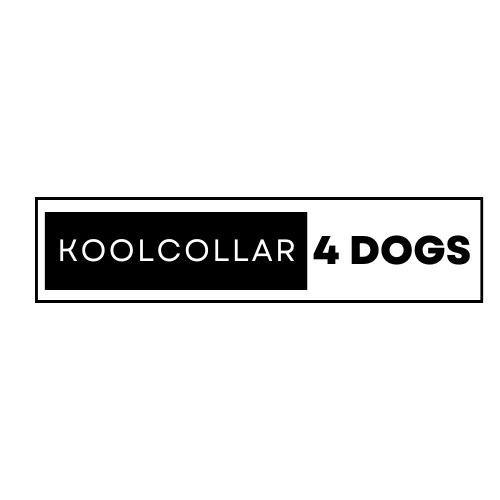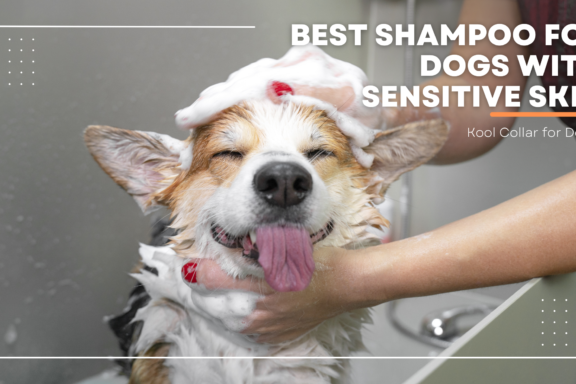Introduction: Understanding allergies in dogs
As a devoted dog parent, I’ve learned that our furry companions can be just as susceptible to dog allergies as we humans are. And let me tell you, unraveling the sneaky signs of allergies in dogs can be a real head-scratcher! It’s like trying to solve a mystery without any clues, except that the clues are hidden in plain sight – in the form of your pup’s peculiar behaviors and physical manifestations.
Allergies in dogs are no laughing matter. They can cause discomfort, irritation, and even more severe health issues if left unaddressed. But fear not, my fellow dog lovers! I’m here to shed some light on this perplexing predicament, armed with my trusty magnifying glass (okay, maybe not literally) and a healthy dose of humor to make this journey a little less ruff.
So, let’s embark on an adventure of sniffing out trouble and unraveling the sneaky symptoms of allergies in dogs, shall we?
Common symptoms of allergies in dogs
When it comes to common dog allergies, the symptoms can be as diverse as the breeds themselves. From itchy skin to runny noses, our four-legged friends can exhibit a wide range of telltale signs that something’s amiss. Here are some of the most common symptoms to keep an eye (and a nose) out for:
- Excessive scratching, licking, or chewing
- Skin rashes, hot spots, or bald patches
- Ear infections or excessive ear scratching
- Sneezing, wheezing, or coughing
- Watery eyes or runny nose
- Vomiting or diarrhea
- Lethargy or decreased appetite
Now, I know what you’re thinking: “But my dog does some of those things all the time!” And you’re absolutely right. That’s why it’s crucial to look for patterns and combinations of symptoms, rather than relying on a single sign. It’s like trying to solve a puzzle with only a few pieces – you need the whole picture to see what’s really going on.
Allergens that can trigger allergies in dogs
So, what exactly is causing your pup’s discomfort? Well, the list of potential allergens is longer than a Great Dane’s tail! From environmental factors to food ingredients, there’s a whole world of culprits out there just waiting to make your dog’s life miserable. Here are some of the most common allergens that can trigger allergies in dogs:
- Environmental allergens: Pollen, dust mites, mold spores, and even certain fabrics or cleaning products can send your dog’s immune system into overdrive, leading to environmental allergies in dogs.
- Food allergens: Proteins found in meat, dairy, grains, and even some fruits and vegetables can cause food allergies in sensitive pups.
- Flea saliva: Ah, the dreaded flea bite! Not only are these pesky critters annoying, but their saliva can also trigger allergic reactions in dogs.
- Insect stings or bites: Bees, wasps, and even mosquitoes can leave your pup with more than just an itchy bump, potentially causing an allergic reaction.
It’s like a game of “Guess Who?” but instead of asking questions about hair color or eye shape, you’re trying to figure out which allergen is the culprit behind your dog’s misery. And trust me, it can be just as frustrating as that old board game!
Different types of allergies in dogs
Now, let’s dive a little deeper into the different types of allergies that can affect our furry friends. It’s like a choose-your-own-adventure book, but with way more sneezing and scratching involved.
- Atopic dermatitis: This is a fancy way of saying “skin allergies.” Dogs with a topic dermatitis are allergic to environmental allergens like pollen, dust mites, or mold spores. The symptoms usually involve itchy skin, rashes, and hot spots.
- Food allergies: Just like humans, dogs can develop food allergies to certain food proteins. Common culprits include beef, dairy, wheat, and even some fruits and veggies. Symptoms can range from skin issues to digestive problems.
- Flea allergy dermatitis: This is when your dog’s immune system overreacts to flea saliva, causing intense itching, rashes, and hair loss. It’s like having a tiny vampire that your dog is allergic to! Proper flea control is key to managing this type of allergy.
- Insect bite/sting allergies: Some dogs can have severe reactions to insect bites or stings, ranging from swelling and hives to potentially life-threatening anaphylactic shock.
It’s like a game of “Whack-a-Mole,” but instead of hitting moles with a mallet, you’re trying to identify and manage different types of allergies. And let me tell you, it can be just as frustrating (but hopefully a little less violent).
Diagnosing allergies in dogs
So, you’ve noticed some suspicious symptoms, and you’re starting to suspect that your pup might be dealing with allergies. But how do you confirm your suspicions? Well, my friends, that’s where the real detective work comes in!
Your trusted veterinarian will likely start by taking a thorough medical history and performing a physical examination. They might also recommend some diagnostic tests, such as:
- Skin or blood tests: These can help identify specific allergens that your dog is reacting to, whether environmental or food-related.
- Elimination diet trials: By removing certain ingredients from your dog’s diet and monitoring their response, your vet can narrow down potential food allergens.
- Intradermal skin testing: This involves injecting small amounts of allergens just under your dog’s skin and observing for reactions.
It’s like a real-life game of “Clue,” but instead of trying to figure out who committed the crime, you’re trying to solve the mystery of what’s causing your dog’s allergic reactions. And let me tell you, it can be just as thrilling (but hopefully with fewer murders).
Managing allergies in dogs: Treatment options
Once you’ve cracked the code and identified the culprit(s) behind your dog’s allergies, it’s time to explore treatment options. And let me tell you, there’s no one-size-fits-all solution – it’s like trying to find the perfect outfit for a shapeshifter!
Here are some of the most common treatment approaches for managing allergies in dogs:
- Avoidance: If you’ve identified specific environmental or food allergens, the first line of defense is to eliminate or reduce your dog’s exposure to them. This might involve making changes to your home environment, switching to a hypoallergenic diet, or using flea and tick prevention products.
- Medication: Depending on the severity and type of allergy, your vet may prescribe medications like antihistamines, corticosteroids, or immuno therapy (allergy shots)to help manage your dog’s symptoms.
- Bathing and skin care: Regular bathing with medicated shampoos and applying soothing creams or ointments can help alleviate skin irritation and itching associated with allergies.
- Dietary supplements: Some pet owners find success in using natural supplements like omega-3 fatty acids, probiotics, or antioxidants to support their dog’s immune system and reduce inflammation.
It’s like trying to navigate a maze, but instead of finding the exit, you’re trying to find the perfect combination of treatments to keep your dog’s allergies under control. And trust me, it can be just as confusing (but hopefully a little less maze-like).
Natural remedies for allergies in dogs
Now, for those of you who prefer a more holistic approach, there are plenty of natural remedies that can help manage your dog’s allergies. It’s like trying to solve a puzzle with eco-friendly pieces!
Here are some natural remedies that have shown promise in alleviating allergy symptoms in dogs:
- Coconut oil: This versatile superfood can be applied topically to soothe itchy skin or added to your dog’s diet to support a healthy immune system.
- Apple cider vinegar: Diluted apple cider vinegar can help restore your dog’s skin’s natural pH balance and alleviate itching and inflammation.
- Oatmeal baths: Soaking your pup in a warm oatmeal bath can provide relief from itchy skin and help moisturize their coat.
- Aloe vera: The soothing properties of aloe vera can help calm irritated skin and reduce inflammation associated with allergies.
- Quercetin: This natural bioflavonoid has anti-inflammatory and antihistamine properties that may help manage allergy symptoms in dogs.
It’s like trying to solve a puzzle using only natural ingredients – a little unconventional, but potentially just as effective (and a whole lot more eco-friendly)!
Preventing allergies in dogs: Tips for pet owners
They say an ounce of prevention is worth a pound of cure, and that couldn’t be more true when it comes to managing allergies in dogs. While you can’t always prevent allergies from developing, there are steps you can take to minimize your pup’s exposure to potential allergens and reduce their risk of developing allergic reactions.
Here are some tips for preventing allergies in dogs:
- Keep your home clean: Regular vacuuming, dusting, and using air purifiers can help reduce environmental allergens like dust mites and pollen.
- Groom regularly: Brushing your dog’s coat and bathing them with a gentle, hypoallergenic shampoo can help remove allergens and keep their skin and coat healthy. This can also help prevent excessive face rubbing due to itchiness.
- Use high-quality dog food: Choosing a high-quality, grain-free, or limited-ingredient diet can help minimize your dog’s exposure to potential food allergens.
- Stay on top of flea and tick prevention: Using effective flea and tick control products can help prevent allergic reactions to insect bites and saliva.
- Monitor for signs of allergies: Keeping a watchful eye on your dog’s behavior and physical appearance can help you catch allergic reactions early and seek treatment promptly.
It’s like playing a game of “prevent-the-problem” instead of “solve-the-problem.” And while it might take a little extra effort, the payoff of a happy, healthy, and itch-free pup is worth it!
Allergies in dogs vs. other health issues: How to differentiate
Now, I know what you’re thinking: “But what if my dog’s symptoms aren’t actually allergies?” You’re absolutely right to be cautious, my friend. There are plenty of other health issues that can mimic the symptoms of allergies in dogs, and it’s important to rule them out before jumping to conclusions.
Here are some conditions that can be easily confused with allergies in dogs:
- Skin infections: Bacterial or fungal infections can cause skin irritation, rashes, and excessive scratching or licking.
- Parasites: Fleas, mites, and other external parasites can cause itching, hair loss, and skin irritation that may resemble allergic reactions.
- Hormonal imbalances: Conditions like hypothyroidism or Cushing’s disease can lead to skin and coat changes that may be mistaken for allergies.
- Environmental irritants: Exposure to certain chemicals, cleaning products, or irritants can cause skin and respiratory reactions that mimic allergy symptoms, such as a contact allergy.
It’s like trying to solve a mystery where all the clues point in different directions. But fear not, my fellow detectives! With the help of your trusty veterinarian and some diagnostic tests, you can rule out these imposters and get to the bottom of your dog’s true condition.
Conclusion: Keeping your furry friend healthy and happy
Whew, what a journey we’ve been on! From sniffing out sneaky symptoms to exploring natural remedies and prevention strategies, we’ve covered a lot of ground in our quest to understandallergies in dogs.
But fear not, my fellow dog lovers! With a little detective work, patience, and a healthy dose of humor, you can navigate the world of allergies and keep your furry friend happy, healthy, and itch-free.
Remember, the key is to stay vigilant, work closely with your veterinarian, and never underestimate the power of a good belly rub (or maybe that’s just my personal preference). Together, we can solve the mystery of allergies in dogs and ensure that our beloved companions can live their best lives, free from the discomfort and misery ofallergic reactions.
So, let’s raise a (dog-friendly) treat to our furry friends and celebrate the journey we’ve taken together. Who knows, maybe we’ll even solve a few more doggy mysteries along the way!
If you suspect your furry companion might be dealing with allergies, don’t hesitate to schedule an appointment with your trusted veterinarian. Early detection and treatment can make all the difference in managing your dog’s allergies and ensuring they live a happy, healthy, and itch-free life.
Remember, your dog’s wellbeing is our top priority, and we’re here to support you every step of the way in finding the rightdog allergy treatmentand answering questions like “what can I give my dog for allergies?” and “when do dogs get allergies?”. With proper care and management, you can help yourallergic doglive their best life, free from the discomfort ofallergy bumpsand other symptoms. Remember,seasonal allergiesmay come and go, but your love for your furry friend is forever!





